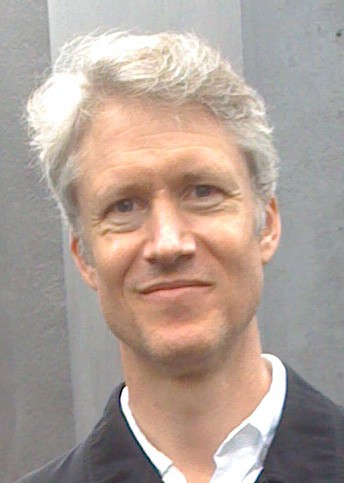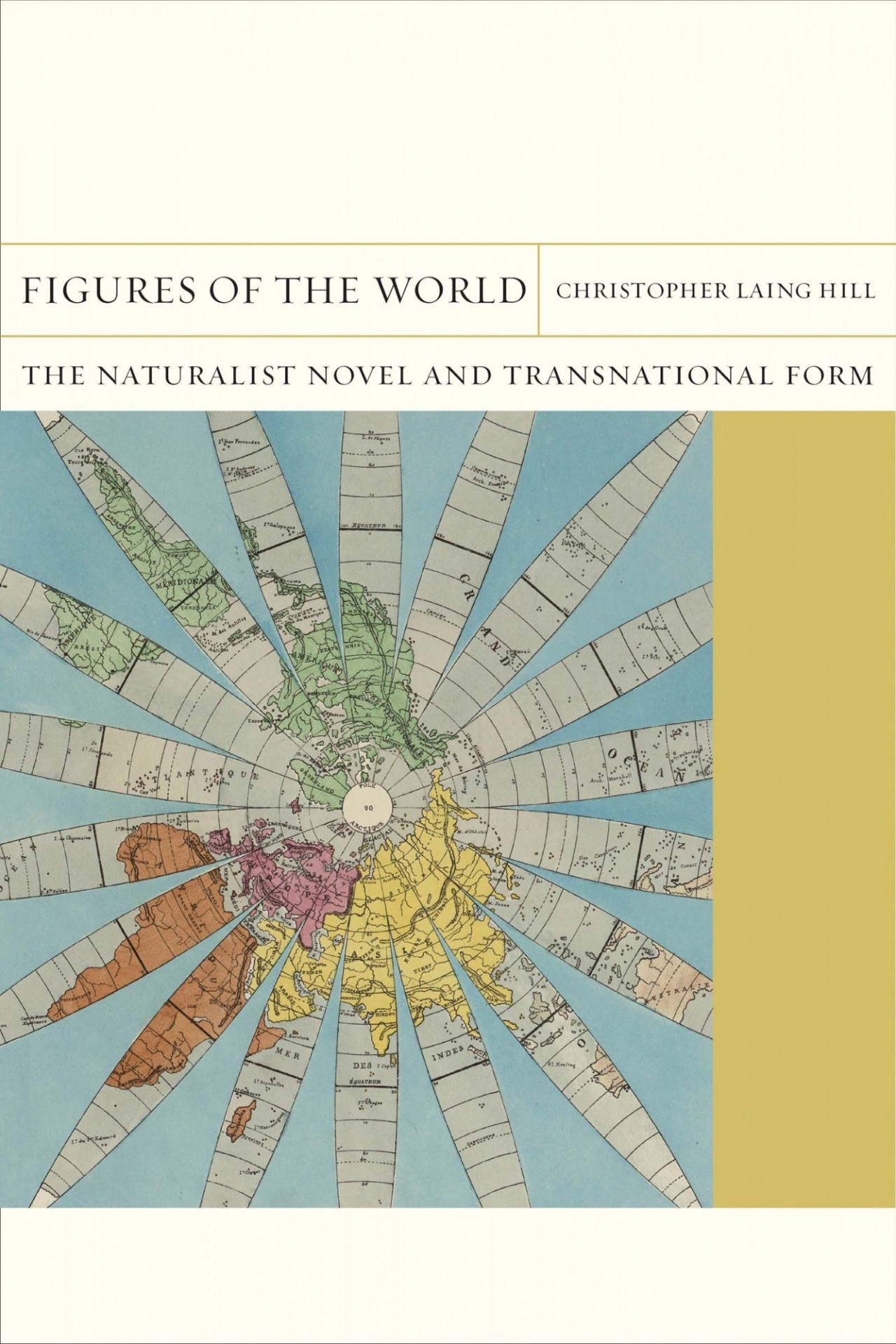WEAI Author Q&A: Christopher Hill's 'Figures of the World'
Northwestern University Press will be hosting a book talk with Figures of the World author Christopher Laing Hill on October 23, 2020. Register here.

We are excited to announce a new title in the Studies of the Weatherhead East Asian Institute book series: Figures of the World: The Naturalist Novel and the Transnational Form published by Northwestern University Press. The book’s author, Christopher Hill, is Associate Professor of Modern Japanese Literature at the University of Michigan.
Figures of the World: The Naturalist Novel and Transnational Form overturns Eurocentric genealogies and globalizing generalizations about “world literature” by examining the complex, contradictory history of naturalist fiction. Christopher Laing Hill follows naturalism’s emergence in France and circulation around the world from North and South America to East Asia. His analysis shows that transnational literary studies must operate on multiple scales, combine distant reading with close analysis, and investigate how literary forms develop on the move.
The book begins by tracing the history of naturalist fiction from the 1860s into the twentieth century and the reasons it spread around the world. Hill explores the development of three naturalist figures—the degenerate body, the self-liberated woman, and the social milieu—through close readings of fiction from France, Japan, and the United States. Rather than genealogies of European influence or the domination of cultural “peripheries” by the center, novels by Émile Zola, Tayama Katai, Frank Norris, and other writers reveal conspicuous departures from metropolitan models as writers revised naturalist methods to address new social conditions. Hill offers a new approach to studying culture on a large scale for readers interested in literature, the arts, and the history of ideas.
We thank Professor Hill for taking the time to discuss his new book with us.
Q: First, can you introduce yourself and your research interests? How did you come to study Japanese literature?
I started studying Japanese literature soon after I arrived at Columbia to do a PhD in Comparative Literature. When I applied to graduate school I planned to study Transatlantic modernism, but experience teaching and working as a journalist in Japan pulled me toward Japanese literature, and back into the nineteenth century, while I continued studying American and European literature. I have always approached Japan from a comparative perspective, first in my book National History and the World of Nations and now in Figures of the World. Because Japanese intellectuals have kept an eye on trends in literature and thought elsewhere since the 1850s, I think that to understand modern Japanese literature and intellectual history you need to understand their connections with the world.
Q: Figures of the World looks at naturalism in US, French, and Japanese literature. What is naturalism? Where did it come from and why did it spread so widely?
Naturalism was a kind of realistic fiction that emerged in France in the 1860s through a convergence of trends in European realism. Naturalist writers such as Edmond and Jules de Goncourt and Emile Zola thought they could write in a coldly objective and non-moralistic way that would let them reveal unpleasant truths to a society that did not want to see them. This way of writing stories and novels caught on in France, Europe, and many other parts of the world, so that by the 1920s you could find it across Europe, in South and North America, and East Asia. One source of its appeal was that writers could use naturalist methods to challenge entrenched sentimental and moralistic fiction in their own countries. It also helped that Zola promoted naturalism zealously through manifestos and essays. Interestingly, writers adopted naturalism sooner in some places distant from France (such as Brazil) than in some places close by (such as England). It appealed more to writers who were fighting to establish socially descriptive, critical fiction, and less to writers in places where a kind of realistic fiction already existed.
Q: Can you elaborate on how naturalism manifested in Japanese and other East Asian fiction?
For someone working in Comparative Literature, one of the interesting things about naturalist fiction is that writers adapted naturalist methods in different ways in order to address social and political conditions in their countries. Even though a writer in Finland and one in Korea might both consider themselves to be writing naturalism, and have genealogical connections to naturalistic fiction as it first appeared in France, their work can seem pretty different. East Asia is a good example. Some writers in Japan, such as Kosugi Tengai and Tayama Katai, started adapting naturalist methods around 1900. They mainly knew French naturalist works through English translations, and they read naturalism alongside German romanticism, ending up with a distinct style. That early Japanese naturalism eventually developed into the so-called I-novel, a kind of egocentric naturalism that Chinese and Korean students in Japan such as Yu Dafu and Kim Tong-in read with interest. When they returned to their countries they started writing their own egocentric naturalism, which had a relatively short career in China and Korea but changed fiction in a lasting way. In China there was an argument between writers influenced by the naturalism that developed in Japan and those who knew French naturalism, about how to write realistic fiction. Naturalism in East Asia is a complicated history that reveals a lot about the transnational literary scene in the early twentieth century. There are different—but similarly complicated—histories of naturalism in different parts of the world that show that supposedly "peripheral" writers were doing inventive things after naturalism was pronounced dead in France. The whole history upends expectations about originators and followers.
Q: How did naturalist fiction fit into Japan’s literary landscape at the time?
The early naturalist writers in Japan were critical of the kind of realism practiced in the 1890s by writers associated with Ozaki Kōyō, which they thought remained moralistic and sentimental. In these early years naturalism was antagonistic toward the mainstream literary scene. That changed when writers such as Shimazaki Tōson who hadn't started off as naturalists got involved. After Tayama Katai published his autobiographical novella "Futon" (The Quilt) in 1907, naturalism in the form of the I-novel became very popular. It was pretty gloomy and scandalous, though. When Shiga Naoya and other writers associated with the magazine Shirakaba began writing I-novels they got rid of the pessimism and strove for an ethic of sincerity, which was still another big change. By that time, in the late 1910s, the I-novel was well accepted and was being challenged by modernist and proletarian writers.
Q: What were naturalism’s lasting influences? How is naturalism viewed today?
Naturalist fiction had many different afterlives. Its legacy in one part of the world was different from its legacy in another. In France, it was pushed aside by psychological fiction in the 1880s, even though Zola continued writing. In the United States, naturalism was important into the 1930s and contributed to muckraking literature and fiction on the Left. It was an inspiration for later writers such as Richard Wright. In Japan, you could say that naturalism lives on in the form of the I-novel, which is still a common form of fiction. But in these places and many other parts of the world it remains as controversial as it was in its heyday. I wrote Figures of the World partly because critics' dislike of naturalism didn't make sense to me since I knew it was so influential. I wanted to understand how and why this way of writing fiction traveled so widely.
Q: What would you like readers to take away from Figures of the World?
Since the early 2000s there have been a lot of debates in Comparative Literature about "world literature." Some of the most influential arguments can't seem to think about the way that writers outside Europe participated in transnational movements like naturalism as anything but derivative. Either they were unoriginal because they imitated European writers too well, or they were inept because they couldn't imitate them well enough. When researching the transnational history of naturalist fiction, I found that on the so-called cultural periphery of the nineteenth and early twentieth century there were some bad naturalist writers (as in Europe) but also writers working in ways you couldn't have predicted from the early examples of naturalism in France. They were taking apart French naturalism and putting it back together in really interesting ways that let them write critically about their own societies. So one of the take-aways is that when you look at cultural production on a large scale, departures and arrivals (naturalist fiction leaving France and arriving in Japan, for example) aren't nearly as important as the continual transformations that happen when an expressive form like naturalism is on the move. If readers can use Figures of the World to see how that would also be true of science fiction, martial-arts films, video games (the list could go on), I will be happy.

